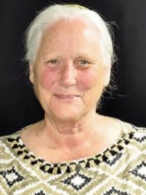
GAME THEORY: When dyslexic children are "pushed" to read at a faster and faster pace, they improve in every area of reading and in much less time, compared to traditional phonics-based approaches. Turning this process into a game keeps students motivated, especially when they find they are reading more effortlessly each day.
Important processes in the brain such as visual attention, error monitoring, speed of processing, working memory, and other processes important to fluent reading, are components of what is called executive function. Since fluent reading relies heavily on all of these components, neuroscientists are finding ways to target executive function as part of reading intervention.
Reading fluency training is one such successful strategy to improve executive function in dyslexia. When dyslexic children are "pushed" to read at a faster and faster pace, taking them beyond their typical reading rate and comfort zone, they improve in every area of reading, and in much less time compared to traditional phonics-based approaches. This process, when it is added to systematic reading instruction, helps to synchronize the brain regions involved with reading, leading to long term improvements in all aspects of reading. Turning this process into a game keeps students motivated, especially when they find they are reading more effortlessly each day.
INCREASING OPTIMISM
Neuroimaging, new electroencephalogram (EEG) technologies, and other advances in neuroscience are providing a window into how different types of intervention change the brain. Recovery is possible by incorporating new research-based strategies into intervention.•
References
- Bailey, S.K., Aboud, K.S., Tin, Q.N., & Cutting, L. (2018). Applying a network framework to the neurobiology of reading and dyslexia. Journal of Neurodevelopmental Disorders, 10(37).
- Horowitz-Kraus, T. (2023). The role of executive functions in fluent reading: Lessons from reading acquisition and remediation. Mind, Brain, and Education. doi.org/10.1111/mbe.12357
- Nugiel, T., Roe, M.A., Taylor, W.T., Cirino, P.T., Vaughn, S.R., Fletcher, J.M., Juranek, J., & Church, J.A. (2019). Brain activity in struggling readers before intervention relates to future reading gains. Cortex, 111:286-302.
- Peck, F., Leong, A., Zekelman, L., Hoeft, F. (2018). Compensatory skills and dyslexia: What does the science say? International Dyslexia Association. The Examiner, Volume 7(2). Retrieved from dyslexiaida.org/compensatory-skills-and-dyslexia-what-does-the-science-say
- Perdue, M.V., Mahaffy, K., Vlacevic, K., Wolfman, E., Erbell, F., Richlan, F., Landi, N. (2022). Reading intervention and neuroplasticity: A systematic review and meta-analysis of brain changes associated with reading intervention. Neuroscience and Biobehavioral Reviews, 132: 465-494.
- Yeatman J.D. & Huber E. (2018, June 13). Sensitive periods for white matter plasticity in human. bioRxiv preprint: biorxiv.org/cgi/content/short/346759v1
ABOUT THE AUTHOR:

Georgie Normand, M.A. holds a Master's degree in Reading Education and has spent many years working with students with dyslexia. She is the founder of Early Literacy Solutions and the author of the Orton-Gillingham based Fluency Builders Dyslexia Program (earlylitera- cysolutions.com). Designed for parents, tutors, and teachers, the Fluency Builders program utilizes the latest neuroscience in dyslexia. These new studies found that dyslexia is not a one-size-fits-all learning disability. She has also developed the Certified Dyslexia Practitioner Program, a professional learning program that trains teachers and tutors to identify and succeed with multiple dyslexia profiles. Visit georgienormand@earlyliteracysolutions.com